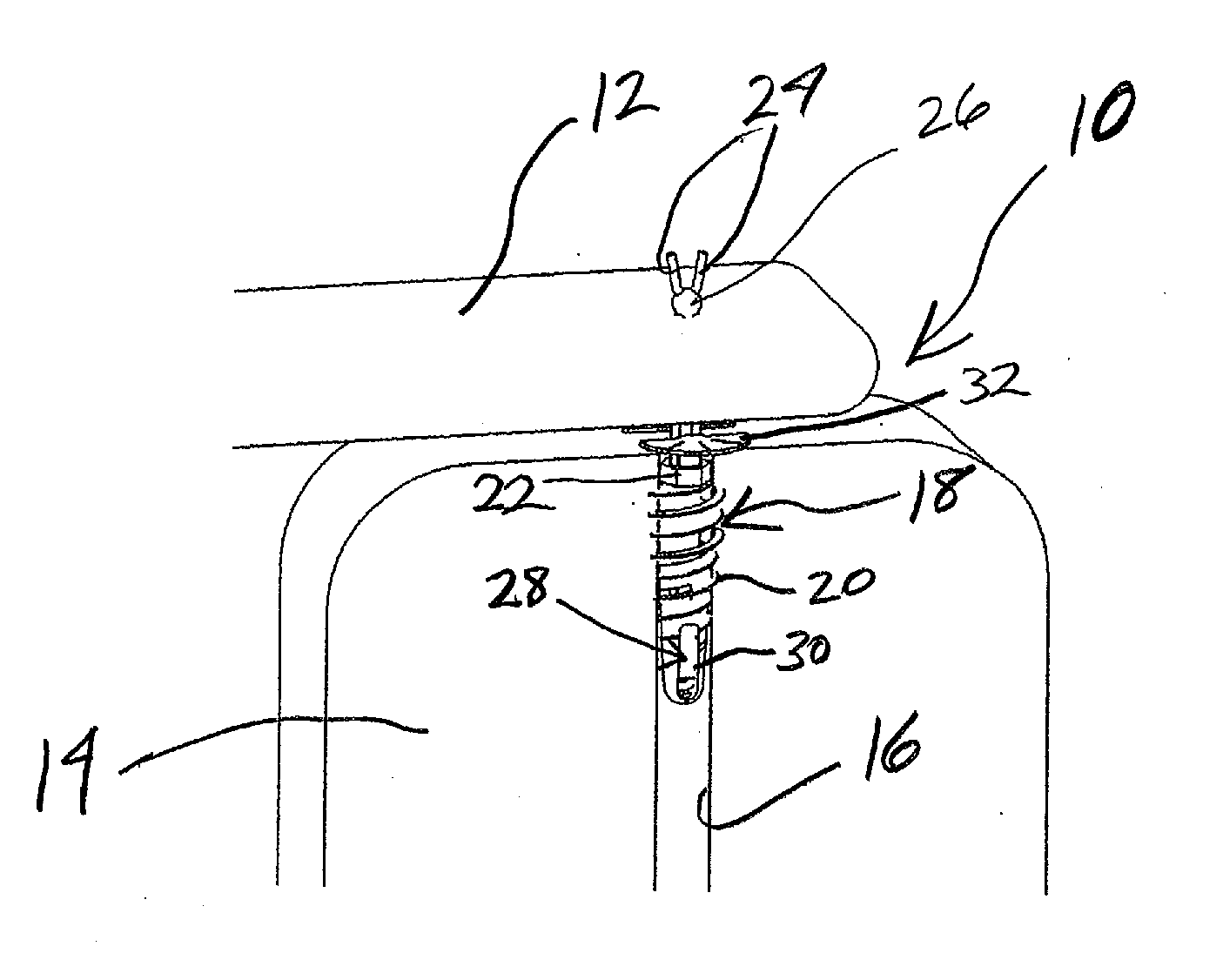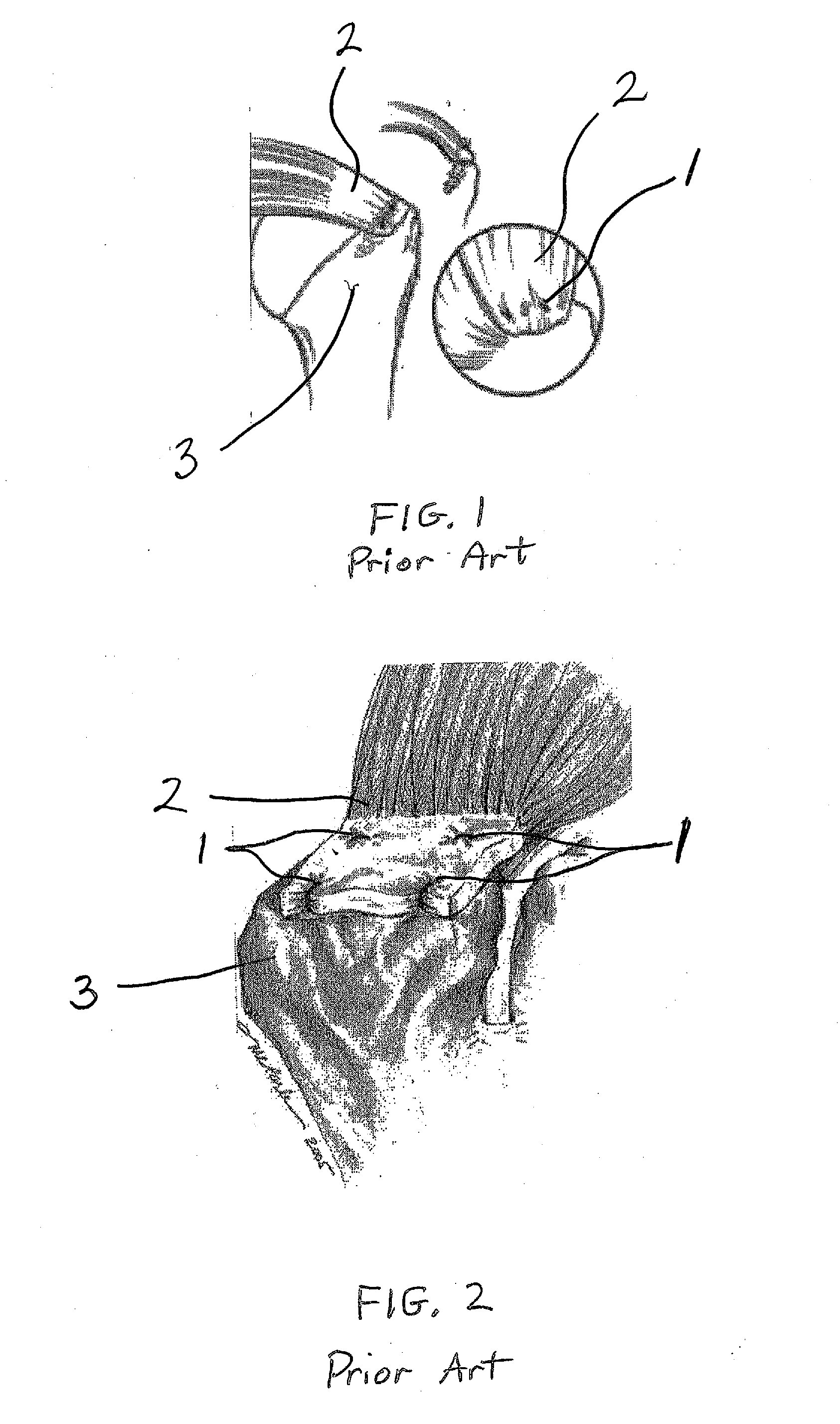Systems and methods for repairing soft tissues using nanofiber material
a technology of nanofiber material and soft tissue, applied in medical preparations, medical science, surgery, etc., can solve the problems of low healing rate and failure to heal, and achieve the effect of improving the current repair and improving the soft tissue-to-bone repair
- Summary
- Abstract
- Description
- Claims
- Application Information
AI Technical Summary
Benefits of technology
Problems solved by technology
Method used
Image
Examples
Embodiment Construction
[0037]Referring now more particularly to FIGS. 4-7B, the inventive system and methods utilize nanofiber material which is incorporated into the suture anchor and deployed into the bone using standard arthroscopic surgical techniques. Once deployed, the material is located between the soft tissue and bone.
[0038]FIGS. 4 and 5 illustrate the implementation of a soft tissue anchoring system 10 in accordance with the present invention. What is illustrated is a portion of soft tissue 12 which is to be attached to a portion of bone 14 using the anchoring system 10. The soft tissue 12 may comprise a rotator cuff tendon, to be secured to the humerus, as discussed above in conjunction with FIGS. 1-3, or the invention is equally applicable to any other site wherein attachment of soft tissue to bone is desired. A bone tunnel 16 is created in the bone 14 and a suture anchor 18 is placed within the bone tunnel 16, as shown, using common surgical techniques, which may or may not be arthroscopic. T...
PUM
 Login to View More
Login to View More Abstract
Description
Claims
Application Information
 Login to View More
Login to View More - R&D
- Intellectual Property
- Life Sciences
- Materials
- Tech Scout
- Unparalleled Data Quality
- Higher Quality Content
- 60% Fewer Hallucinations
Browse by: Latest US Patents, China's latest patents, Technical Efficacy Thesaurus, Application Domain, Technology Topic, Popular Technical Reports.
© 2025 PatSnap. All rights reserved.Legal|Privacy policy|Modern Slavery Act Transparency Statement|Sitemap|About US| Contact US: help@patsnap.com



